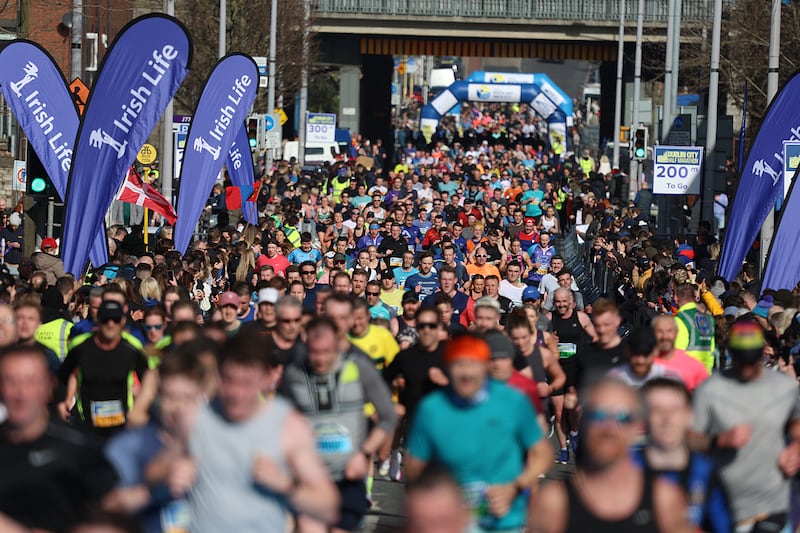Should you be stopped in your tracks by the sight of two dancers performing beside the Grand or Royal Canals in Dublin next week, rest assured. That’s the intention. The choreographers Favour Odusola and Jessie Thompson have created short solos that they hope will encourage passersby to pause, reflect and, perhaps, reimagine how they interact with the waterways.
For David Bolger, artistic director of CoisCéim Dance Theatre, the initial idea for the project, called Bench, came when the company relocated from Sackville Place, off O’Connell Street, to their new studio in Fairview. “We wanted to find out more about our new community and investigate ways of being present in this area,” he says. “I have lived most of my life near the canals and even though there are so many spoken and written words about the canals, I think of them physically, as a physical presence. So, I started to think about the idea of the movement of the canals, the rhythm of the water and locks and how we might engage with that.”
Aside from the obvious Irish dance spectacular, rivers and dance have previously come together in projects such as Luke Murphy’s Slow Tide, in Kilkenny and Skibbereen, and in Maria Nilsson Waller’s recent work Riverine, in Limerick. Bolger has previously brought dance to water in his film Deep End Dance.
Thompson’s choreography is rooted in street dance, but in recent years she has increasingly integrated contemporary dance technique in solos like Crawler and From One, both of which featured at Dublin Dance Festival, while also appearing in works by Emma Martin and Monica Muñoz. She has just finished performing Riverine with Step Up in Limerick, which was based on the River Shannon.
RM Block
Odusola, who has a master’s degree in theatre arts and business administration, now works as an interdisciplinary artist, in particular with Umakoko, his dance and entertainment company. A natural storyteller, he was seduced by canal lore. “What captivated me was the depth of the stories behind what I thought of as just waterways,” he says. “What now really intrigues me is the history and tales that lie beneath the canals.”
The title Bench is metaphorical: the dances, which have been commissioned in conjunction with Waterways Ireland as part of a pilot arts project, will not necessarily take place on a bench. Both choreographers were drawn, however, to the sense of community that public seating can encourage, as well as to the way benches can offer sanctuary from urban bustle.
Odusola chose an area near the statue of the poet Patrick Kavanagh by Baggot Street Bridge as his impromptu stage. Here the Grand Canal’s narrow towpath opens out into broad grassy areas by the roaring water of Lock C4.
“I think the reason why I fell in love with this place was the grass and sense of space,” he says. “But the sound of the water in the lock is also amazing. It is so loud and drowns out everything else. It keeps you in the present moment.” Detaching from the virtual world of smartphones and fast-paced living is important, he says. “Everyone feels the need to be doing something all the time. Even personally, I’ve had to really explore the idea of slowing down, staying still or just not thinking.”
Thompson was similarly drawn to an expansive space at Spencer Dock, where the Royal Canal joins the River Liffey. In contrast to the natural grass and waterfalls of Baggot Street, she was drawn to the stark juxtaposition of hard concrete and soft water in Dublin’s Docklands.
“It is definitely a challenge, because there’s less nature,” she says. “But I think that’s the interesting part for me, because I do pull from nature in a lot of my work.” The site for her performance is marked by straight paths, a modern bridge and a functional jetty. For her, seeing a couple silently sitting on a bench in front of a large office block drew attention to the way the built environment can influence our behaviour and habits. The architecture not only overshadows the human form in terms of scale but also amplifies noise and restricts daylight. “Having that concrete and noise around has made me really focus on what the canal has to offer.”
Creating outdoor performances is challenging, particularly holding on to the sense of the place when creating moves inside the dance studio. Thompson might be spending seven or eight hours a day in the studio, but she has to go back to Spencer Dock to reconnect with the space.
“That is as much part of the process as the studio time,” she says. “It actually counts as studio time. I think my process is like an archival experience, because I’ve so many photographic memories from the canal, personal ones. There are so many characters from the canal that I have in my mind that are making their way into the piece. It’s just about making them open to the world, making them relatable and seeing how they can evolve. So, now, a lot of the work is figuring out feelings, senses and logistics around the dance.”
“I hate being in the studio for the first week or so, especially if I’m creating an outdoor performance,” Odusola says. “So, I spoke with David [Bolger] a lot. I researched by watching videos, listening to poems, listening to people talking about the canal or singing about it. That was how I developed my own understanding of the place.” Some of that research was done on location, on the bench beside the statue of Patrick Kavanagh. “I was sitting there listening to his poems. I asked him questions and I felt that the poems were replying to me.”
Although performance times are set, Bolger hopes many people will just “happen upon” the dancers and take the time away from their schedule to pause and watch. The solos will take place simultaneously, but there are two showings on the final day, and Bolger hopes that audiences will walk between the two venues, to see both dances. “We would like to have somebody guide them so that they can learn more about the canals.”
However carefully planned, outdoor performances are unpredictable, from weather to other distractions, but that too will be embraced. “There could be someone skating beside me on the day – and they could keep falling and that’s where the public’s attention suddenly goes,” Thompson says. “That skater is going to be as much part of the performance as me. And I think that’s really fun.”
Bench is at Spencer Dock, Dublin 1, and Baggot Street Bridge, Dublin 2/4, on Wednesday, August 30th, and Thursday, August 31st, at 1pm and 1.30pm; and on Saturday, September 2nd, at noon, 12.30pm, 2pm and 2.30pm




















